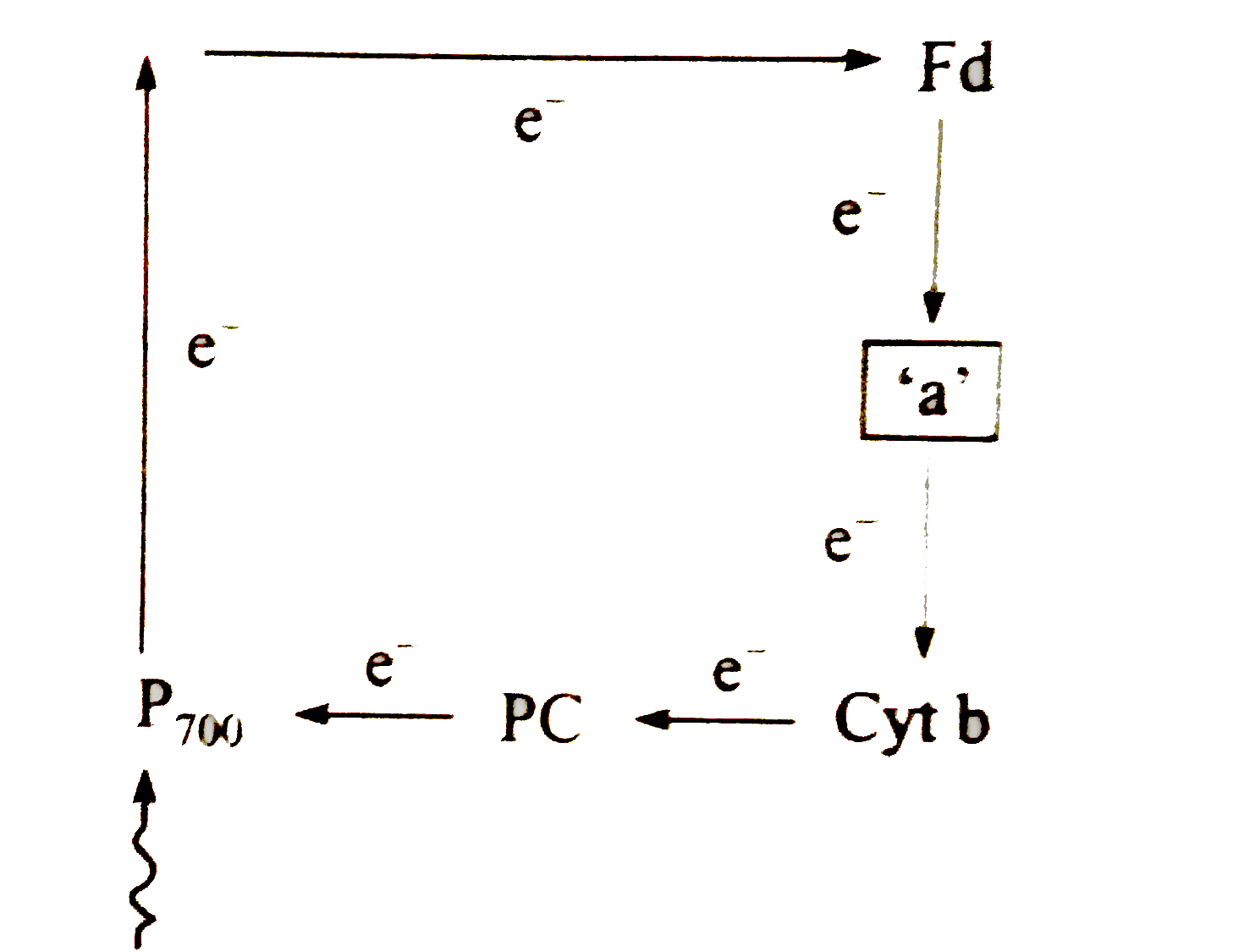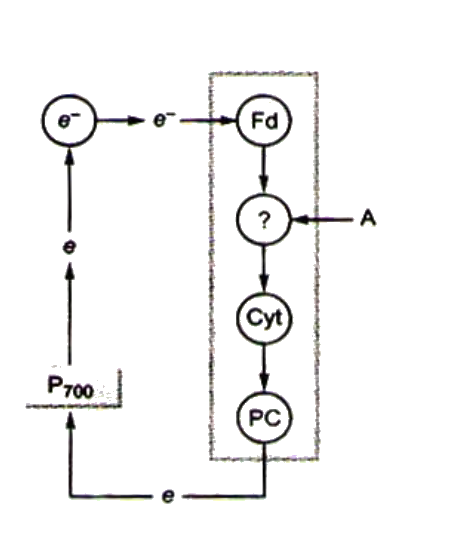What is photophosphorylation ?
Step-by-Step Solution:
1. Understanding Photophosphorylation:
Photophosphorylation is a specific type of phosphorylation that occurs during the process of photosynthesis in plants. It involves the conversion of light energy into chemical energy.
Hint: Remember that "photo" refers to light, which is crucial in this process.
2. Role of ATP:
The main product of photophosphorylation is ATP (adenosine triphosphate), which serves as an energy currency in cells. ATP is formed from ADP (adenosine diphosphate) and inorganic phosphate (P).
Hint: Think of ATP as the energy "money" that cells use to perform various functions.
3. Process of ATP Formation:
During photophosphorylation, light energy is absorbed by chlorophyll in the chloroplasts of plant cells. This energy is then used to convert ADP and inorganic phosphate into ATP.
Hint: Visualize chloroplasts as solar panels that capture sunlight to generate energy.
4. Chemical Reaction:
The chemical reaction can be summarized as:
ADP+P+light energy→ATP
This reaction highlights how light energy is essential for the formation of ATP.
Hint: Remember the equation as a way to connect light energy with the production of ATP.
5. Location of Photophosphorylation:
Photophosphorylation occurs in the thylakoid membranes of chloroplasts during the light-dependent reactions of photosynthesis.
Hint: Think of thylakoids as the site where the "magic" of converting light to energy happens.
6. Types of Photophosphorylation:
There are two types of photophosphorylation: cyclic and non-cyclic. In cyclic photophosphorylation, electrons return to the chlorophyll, while in non-cyclic photophosphorylation, electrons move to NADP+, forming NADPH.
Hint: Remember the difference between cyclic (recycling) and non-cyclic (producing new products) processes.
Summary:
Photophosphorylation is the process of converting light energy into chemical energy in the form of ATP during photosynthesis, occurring in the chloroplasts of plant cells. It involves the transformation of ADP and inorganic phosphate into ATP, driven by light energy.
Photophosphorylation is a specific type of phosphorylation that occurs during the process of photosynthesis in plants. It involves the conversion of light energy into chemical energy.
The main product of photophosphorylation is ATP (adenosine triphosphate), which serves as an energy currency in cells. ATP is formed from ADP (adenosine diphosphate) and inorganic phosphate (P).
During photophosphorylation, light energy is absorbed by chlorophyll in the chloroplasts of plant cells. This energy is then used to convert ADP and inorganic phosphate into ATP.
The chemical reaction can be summarized as:
ADP+P+light energy→ATP
This reaction highlights how light energy is essential for the formation of ATP.
Photophosphorylation occurs in the thylakoid membranes of chloroplasts during the light-dependent reactions of photosynthesis.
There are two types of photophosphorylation: cyclic and non-cyclic. In cyclic photophosphorylation, electrons return to the chlorophyll, while in non-cyclic photophosphorylation, electrons move to NADP+, forming NADPH.
Photophosphorylation is the process of converting light energy into chemical energy in the form of ATP during photosynthesis, occurring in the chloroplasts of plant cells. It involves the transformation of ADP and inorganic phosphate into ATP, driven by light energy.
Topper's Solved these Questions
- CELL : THE UNIT OF LIFE BOOK - PRADEEPCHAPTER - CELL : THE UNIT OF LIFE EXERCISE - ADDITIONAL QUESTIONS (SHORT ANSWER QUESTIONS)
111 Videos
- CELL : THE UNIT OF LIFE BOOK - PRADEEPCHAPTER - CELL : THE UNIT OF LIFE EXERCISE - ADDITIONAL QUESTIONS (LONG ANSWER QUESTIONS )
66 Videos
- CELL : THE UNIT OF LIFE BOOK - PRADEEPCHAPTER - CELL : THE UNIT OF LIFE EXERCISE - NCERT EXERCISES WITH ANSWERS
14 Videos
- BREATHING AND EXCHANGE OF GASES BOOK - PRADEEPCHAPTER - BREATHING AND EXCHANGE OF GASES EXERCISE - NOTABLE QUESTIONS
1 Videos
- CELL CYCLE AND CELL DIVISION BOOK - PRADEEPCHAPTER - CELL CYCLE AND CELL DIVISION EXERCISE - Assertion-Reason type questions
18 Videos
Similar Questions
Knowledge Check
In the chart of photophosphorylation, what does 'a' represent
 ACyt aBCyt a3CFRSDPQ.
ACyt aBCyt a3CFRSDPQ.In the chart of photophosphorylation, what does a represent ?
 ACyt aBCyt a3CFRSDPQ
ACyt aBCyt a3CFRSDPQIn the given chart of photophosphorylation, what does 'a' represent?
APCBFRSCPQDCyt a3
ETS.related to photophosphorylation is found in
View SolutionIn CAM plants, photophosphorylation occurs in :
View SolutionWhich of the following is a prominent difference between cyclic and non - cyclic photophosphorylation ?
View SolutionPhotophosphorylation is the
View SolutionPhotophosphorylation means.
View Solution

